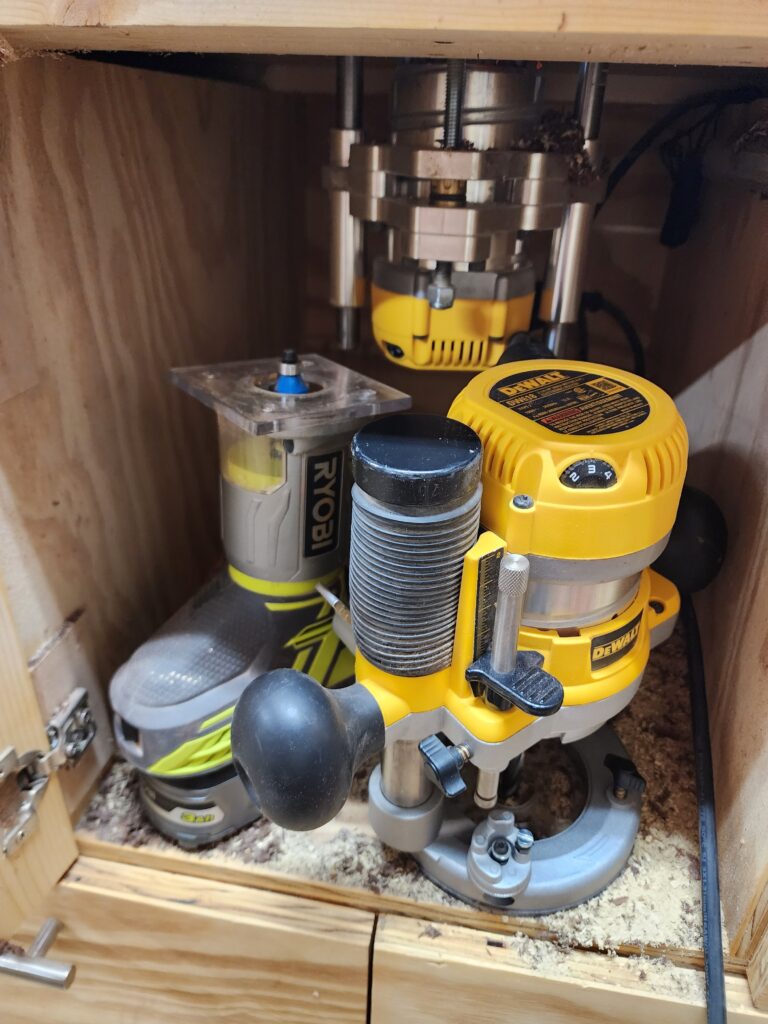What is a Router?
A router is an essential tool for any woodworker. It is used to cut grooves, create decorative edges, and make joints. There are two types of routers: fixed-base routers and plunge routers. Lets keep it simple!
Fixed-base routers are the most common type of router. They are easy to use and are ideal for beginners. They are also less expensive than plunge routers. Fixed-base routers are designed to be used with a fixed depth of cut. This means that you can set the depth of the cut before you start using the router. There are multiple sizes for these routers: palm routers, variable speed routers, and those in which can be mounted on lift system, such as the JessEm router lift 2.
Plunge routers are more versatile than fixed-base routers. They allow you to adjust the depth of the cut while you are using the router. This makes them ideal for creating mortises, dadoes, and other joints. Plunge routers are also more expensive than fixed-base routers.
When choosing a router for your woodshop, there are several factors to consider. The first factor is the type of work you will be doing. If you will be doing mostly edge work, a fixed-base router is probably the best choice. If you will be doing more intricate work, such as creating joints or mortises, a plunge router is probably the best choice.
Another factor to consider is the size of the router. If you will be working with large pieces of wood, you will need a larger router. If you will be working with smaller pieces of wood, a smaller router will be sufficient.
The power of the router is also an important factor to consider. If you will be working with hardwoods or other dense materials, you will need a more powerful router. If you will be working with softer woods or other less dense materials, a less powerful router will be sufficient.
Which one do I used most of?
- Palm router: Used for rounding over edges for about every one of my projects.
- Rounter Lift JessEm system: makes short work for rabbet and dadoes joints, flush trimming, etc.
- Plunge router: making mortises.
- Least used is the fixed base “D” handle.
Purchase a variable speed Router:
The first benefit is that it allows you to work with a wider range of materials. If you are working with soft woods, you can use a slower speed. If you are working with hardwoods or other dense materials, you can use a faster speed. This makes it easier to achieve the desired results.
Another benefit of using a variable speed router is that it allows you to work more safely. If you are working with a large bit or a bit that is prone to overheating, you can slow down the speed of the router to reduce the risk of injury.
A variable speed router also allows you to work more efficiently. If you are working with a large bit or a bit that requires more power, you can increase the speed of the router to get the job done faster.
In conclusion, a variable speed router is an essential tool for any woodworker. It allows you to work with a wider range of materials, work more safely, and work more efficiently. If you are serious about woodworking, investing in a variable speed router is definitely worth it.
In conclusion, when choosing a router for your woodshop, it is important to consider the type of work you will be doing, the size of the router, and the power of the router. A fixed-base router is ideal for edge work, while a plunge router is ideal for creating joints and mortises.
What is your favorite router? Share them with us below!




